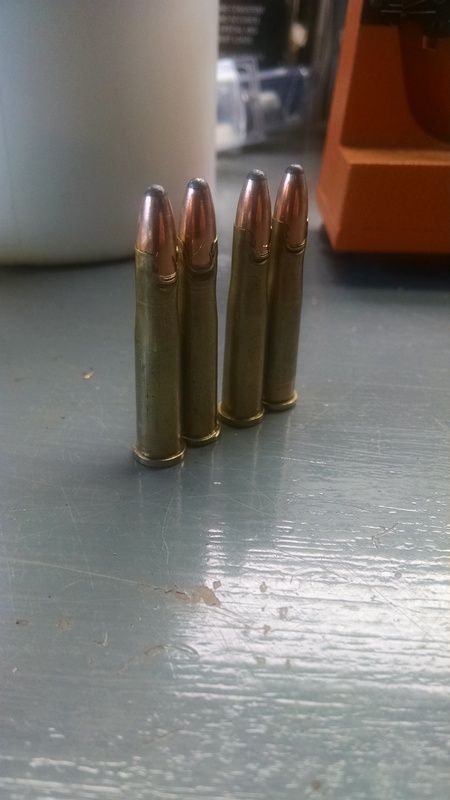In order to participate in the GunBroker Member forums, you must be logged in with your GunBroker.com account. Click the sign-in button at the top right of the forums page to get connected.
22 Hornet why is bullet seating crushing case wall
Any idea why this is happening ? 22 Hornet - 40 gr Sierra - using a Dillon 550 with RCBS dies
4 out of 50 crushed

4 out of 50 crushed

Abort Cuomo


Comments
When seating the bullet, you must guide it into the case mouth by hand. Dont just drop the bullet on top of the case mouth and hope for the best.
The Lyman die opens the case mouth a bit more. Works well. Do lube the inside of the case neck before using the "M" die.
I champher all my brass. I neck size only if the firearm allows it.
Are you full length sizing? What brass is it and how many reloads?
So what firearm are you shooting? Are your bullets .223 or .224? .
What is the diameter of your expander ball and the year of production stamped on your RCBS dies.
I load 40 grain .222 bullets for my 22 Jet, .223 and .224 don't do as well. I have a .224 bullet swage, I'm considering making a .222 one.
quote:Originally posted by charliemeyer007
Well apparently it makes a difference almost 10% of the time.
I champher all my brass. I neck size only if the firearm allows it.
Are you full length sizing? What brass is it and how many reloads?
So what firearm are you shooting? Are your bullets .223 or .224? .
What is the diameter of your expander ball and the year of production stamped on your RCBS dies.
I load 40 grain .222 bullets for my 22 Jet, .223 and .224 don't do as well. I have a .224 bullet swage, I'm considering making a .222 one.
As already posted, "chamfer the case mouth and 'flare' it 'slightly' to ease loading".
Just curious: What is the ID of the case mouth after you size it? If it's smaller than 0.224" and you are trying to load 0.224" bullets, you'll crush the cases 'most' of the time.
As already posted, "chamfer the case mouth and 'flare' it 'slightly' to ease loading".
Doesn't matter, no reloading equipment is perfect. There will be slight misalignment.
The chamfer in the case mouth and the radius at the heel of the bullet have to be greater than the misalignment and the difference in diameter.
I always start by being very careful how I place the bullet on the case neck because you can't count on the shellholder to maintain perfect alignment with the seating punch.
quote:Originally posted by iceracerx
Just curious: What is the ID of the case mouth after you size it? If it's smaller than 0.224" and you are trying to load 0.224" bullets, you'll crush the cases 'most' of the time.
As already posted, "chamfer the case mouth and 'flare' it 'slightly' to ease loading".
Doesn't matter, no reloading equipment is perfect. There will be slight misalignment.
The chamfer in the case mouth and the radius at the heel of the bullet have to be greater than the misalignment and the difference in diameter.
I always start by being very careful how I place the bullet on the case neck because you can't count on the shellholder to maintain perfect alignment with the seating punch.
That is all well and good except it is difficult to insert a .224" bullet into a .223" hole. Trying to insert a .224" bullet into a .224" hole won't work either (that is called an 'interference fit' in the world of machining and engineering). We aren't talking about 5.56 NATO brass.
What do we have if we don't have interference though? Do you want clearance in your case necks?
They're all "interference fit." The question is how much.
If your dies have an expander that is made for .224 caliber bullets, you will still get less internal neck diameter than .224 because the brass will snap back. However it will be what the die maker thinks is correct for .224 bullets.
The neck will be even smaller inside if the dies are made for .223.
Those dies would probably be fine if the case mouths were belled with a die or some tool.
The guys that run less (IE .001-.003) are using bushing dies on turned necks to control the neck tension for target usage (at those levels you run a real risk of having the bullet move due to rough handling).
To see for yourself, simply measure a neck OD before and after seating a bullet.
The Hornet has a well deserved reputation for being a difficult cartridge to reload, and requires you use all the "tricks" such as chamfering, mouth expansion, taper base bullets, etc.